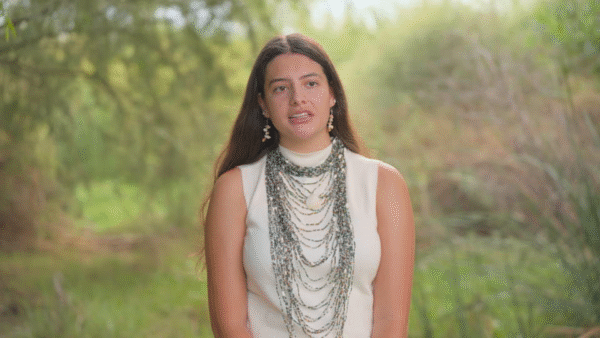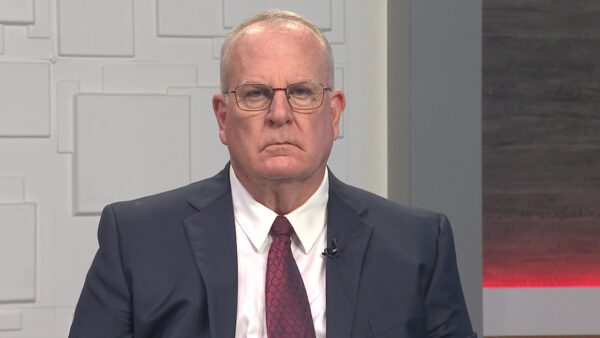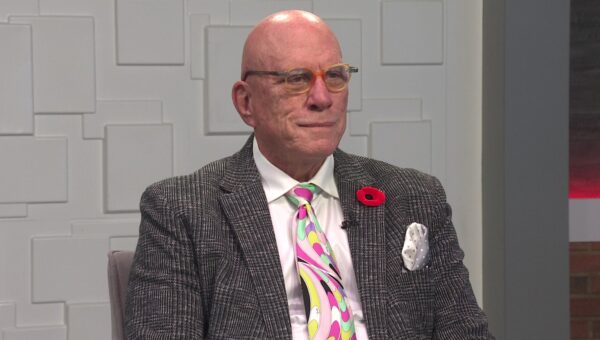Biomimicry is the effort of researchers to use nature’s methods to help develop new technology. A new cooperative venture at Arizona State University aims to make ASU a key academic hub for biomimicry, and will launch March 3. ASU is joining forces with Biomimicry 3.8, a consulting and training firm, to open the new center. Prasad Boradkar, co-director of the Biomimicry Center, and Dayna Baumeister, the other co-director, will tell us more.
Video: Climbing east along US-60, approximately 65 miles from Phoenix and you'll come to a marker for picketpost mountain. It was called tordillo mountain after small birds in the area. 1870 General George stoneman renamed it picketpost mountain. Within eight years a town of 2000 called picketpost, later Pinal City, sprang up to work Arizona's richest silver strike before it petered out. Today thousands flock to the foothills of picketpost mountain to stroll that Boyce Thompson arboretum, to stroll through plant species and 270 kinds of birds.
Ted Simons: Nature has had billions of years to perfect methods that life on earth uses in coping with the planets conditions in biomimicry. Researchers use those methods help develop new technology. A new cooperative venture launches tomorrow. Aims to make ASU a hub for biomimicry. Here to tell us more are the co directors of the biomimicry center Prasad Boradkar: and Dayna Baumeister:, good to have you both here. Thanks for joining us.
Ted Simons: All right so what is biomimicry again.
Prasad Boradkar: Biomimicry has been defined as emulation of natures genius by Gene Benyes essentially what we want to do is to look at how nature has been solving problems for billions of years, learn from that and use it to solve human problems.
Ted Simons: It's basically saying looking at nature and saying hey that's a good idea lets take it further.
Dayna Baumeister: Absolutely, it's help. As one of the species of this planet we are trying to figure out how to survive here and do well and thrive. Why not ask the other 30 million species how they are doing it so well.
Ted Simons: Give me an example of using nature to help develop new technology.
Dayna Baumeister: Well the process begins by literally walking around asking nature for help and advice. I have a functional challenge. I have a need how can nature help me solve that need. Velcro came from actually looking at natural sea birds and how they stick to hair, but you can take that process and go beyond form and look at systems to better understand how we can better live more sustainability.
Ted Simons: When new technology is developed. When the hunt for new technology. Was nature used to be the last things we looked at?
Prasad Boradkar: Well so design has gone through several stages now it focuses it nowadays on human center of design. Designing products for people. One of the things we want to do with biomimicry is take it a step beyond and say like Dayna mentioned there are millions of other species that we can learn from go from human centered design to life centered design. So problem solving general has been focused on lets use a new technology to solve a problem. We are saying lets look broader and look at nature to solve the problem.
Ted Simons: Here is my concern. Lets see if nature got a solution for me. Instead nature has got all this. Pick and choose.
Prasad Boradkar: Yes there could be millions of solutions that we could look at. We could learn from. So instead of focusing it primarily on human which I think is a very myopic way of doing design. Focus on all of life.
Ted Simons: As far as this new biomimicry venture starts here tomorrow. What exactly is all this all about.
Dayna Baumeister: well in order to practice biomimicry, need to learn how to do it. You need a lot of different disciplines at the table. We have got 2 main components at the center. One is education based. Graduate degree programs where you can learn how to become a biomimicry no matter what your background is. And we are bringing together disciplines from across the campus. There is a space for biomimicry for businesspeople, designers, engineers. You need biologists to explain how nature works. Trying to bring everyone together.
Ted Simons: How do you get all these disciplines working together, to get in the same room can be a problem. How do you get them working together for a common goal?
Prasad Boradkar: We have been doing this for a while. ASU has been a leader, we've been running a program called innovation space where we have students from industrial design, communication design, business and engineering sustainability working in teams. We have been doing this about nine years. Now what we have started to do is introduce this methodology of biomimicry to this group of students. Not only combining by design, it can inspire business.
Ted Simons: You hear about ancient Chinese herbs that have been used for millennia. It's out there, how do you know where to look and what to look for?
Dayna Baumeister: That's a great question, that's what I've been doing for the last 20 years is just trying to answer that question. Biomimicry is an emerging discipline of an ancient practice. We have surround ourselves with concrete and pavement and air-conditioning and we forget we're not the first ones living here trying to figure out these pieces. There is a methodology and a systematic way to go out and ask the natural world and that's why you have to come and get some education around it.
Ted Simons: I saw a quote that biomimicry thinking is a school for 21st century careers. True?
Prasad Boradkar: We think sustainability will be even more and more important as we move forward. We think this is a promising methodology and philosophy by which to practice sustainable thinking. Students who might gain this knowledge of learning from nature and solving problems might have an edge over other students in doing what they do.
Ted Simons: The opening ceremony is going to be a TED talk day and hands-on?
Dayna Baumeister: We have 18 faculty lined up that we've paired together. No two faculty are from the same school. They will be talking about initiatives they are currently working on and what they might be working on. We have some that never even met each other that are coming together.
Ted Simons: And performance artists are doing stuff and it's going to be quite the hullabaloo.
Prasad Boradkar: Yes.
Ted Simons: Thank you.
Prasad Boradkar: Thank you for inviting us.
Ted Simons: And that is it for now, I'm Ted Simons. Thank you so much for joining us. You have a great evening.
Prasad Boradkar:Co-Director, Biomimicry Center at Arizona State University; Dayna Baumeister:Co-Director, Biomimicry Center at Arizona State University;






















